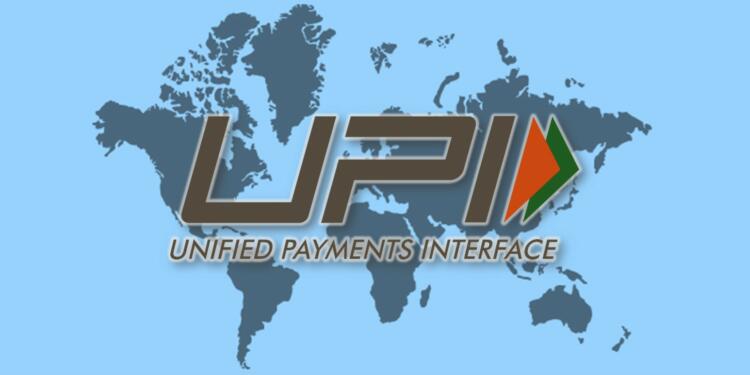Financial systems are a business of trust. No one would choose any medium of financial transaction if they do not trust it. When India decided to go for digital transactions everyone was sceptical of its success. People thought, illiterate population, lower accessibility of the internet and mobiles, and untested applications would tank the government’s digital economy dream. Even our former cabinet minister P Chidambaram doubted about its success. But, National Payment Corporation of India (NPCI) developed such a strong Unified Payments Interface (UPI) that every other country in the world wishes to accept it. UPI’s success in the nation has developed an international trust on the payment system and world’s countries are rushing to integrate the technology to their own payment interfaces.
The Unified Payment Interface system, developed by NPCI for instant real-time payment, is creating history everyday in digital transactions. It facilitates the inter-bank peer-to-peer (P2P) and person-to-merchant (P2M) transactions by using mobile numbers. The secure, easy, efficient, and free payment interface is now universally accepted in India. From small vendors to large businesses, UPI’s accessibility has reached every corner of the nation. With largest value and volume in transactions, UPI’s use has made India the top country in the world to process real time payments. After the successful business in India, UPI now looks to go global as other countries are showing great interest in accepting this technology.
World Demands India’s UPI
Nirmala Sitharaman, the Minister of Finance and Corporate Affairs India, while speaking at the Global Fintech Fest in New Delhi, revealed that world’s countries are showing great interest in adopting Indian payment systems. She said, “Countries such as Singapore, Bhutan, France’s Lyra, and also many others are setting the use for RuPay cards and the Unified Payments Interface.”
While talking about India’s plan to go global in digital transactions, she further said, “The National Payment Corporation of India (NPCI) is taking UPI international by helping other countries to create their own payment systems.”
Recounting the future prospects of transactions, the minister further added that, “UPI’s target is to cross 1 billion transactions as per day in next 5 years.”
Also Read: India should make sure that Russia graduates to UPI and RuPay
UPI’s International Presence
The Minister’s statement is in consonance with increasing demand for UPI in the world. In September 2021, NPCI International Payments Limited (NIPL) signed an agreement with Liquid Group, a cross border digital payments provider. It was to facilitate UPI payments’ acceptance in 10 countries of north and south Asia. Based in Singapore, Liquid Group has payment merchant partners in Malaysia, Thailand, Philippines, Vietnam, Cambodia, Hong Kong, Taiwan, South Korea and Japan. Currently, India has collaborated with only two countries, Malaysia and Singapore, out of the south east Asian Countries that Liquid Group deals with. It is expected that the collaboration will further expand UPI’s presence.
Further, in South Asia, Bhutan and Nepal were the two countries that collaborated with NIPL to use UPI’s technology in their respective countries. In April 2022, NPCI partnered with NeoPay of the United Arab Emirates (UAE), enabling Indians to use UPI around the country. Moreover, in June this year, NIPL signed an Memorandum of Understanding with France’s Lyra Network to enable Indians to pay using UPI and Rupay cards in France.
In December 2021, India-Russia joint statement on the Russian President’s visit to India also highlighted the mutual cooperation in recognition of each country’s payment system. It stated that the two countries would increase dialogue on accepting RuPay and MIR Cards within national payment infrastructures, as well as on interaction of Unified Payments Interface and the Faster Payments Systems of the Banks of Russia. After the beginning of Ukraine war, Russia was prompted to choose an alternative payment system to continue its transactions with India. UPI came handy in this way. Now, reports suggest that the two countries are in the final round of recognising each other’s payment systems.
Further, in March this year, on the occasion of India-Australia Virtual Summit, Prime Minister Modi proposed the early integration of Austrialia’s New Payment Platform and India’s UPI.
This increasing reach of UPI in the world is testimony of its unending success. The payment interface has developed so much credibility in the country that the world has grown very keen on accepting it.
Also Read: France goes RuPay: Est-ce que je peux payer avec une carte de RuPay?
UPI – Pillar of Financial Stability
UPI has transformed the banking pattern of the country. The simplification of banking transactions has enabled a revolution in the Indian finance market. As lending and investment have arrived at the fingertips of people, the real-time successful transaction has created a business-friendly environment in India.
The UPI involves three steps to proceed with a transaction. First, one’s bank account is transformed to a Virtual Payment Address (VPA). The VPA streamlines the account details into simplified form using mobile number to enable transaction through a UPI app. Second, the payment service provider enables the VPA transactions from its end. Finally, UPI facilitates the fund movement from a person’s account to the targeted account. The simplified process increases the efficiency in transactions and helps in building trust over the system.
The growth of UPI has given birth to other business solutions like financial technology (fin-tech). The combination of software, mobile applications, and data analysis has made foundational changes in the finance sector. Now rather than going to the traditional loan provider for a loan at a higher rate, one can get it through mobile apps at a competitive rate, and without any hidden costs.
The other revolutionary change brought through UPI is in the saving pattern. Saving money provides financial freedom and security. Now people do not need to keep cash in hand for any transaction. They can simply transact through UPI whenever they need to, without any worry. This not only provides financial security but further help in the growth of the banking sector, ultimately leading to economic growth.
UPI Is Ready to Rule the World
In 2021, UPI processed transactions worth USD 940 billion, which is equivalent to 30% of India’s GDP. Further, in February 2022, 80% of the total transaction value was recorded from peer-to-peer payments and 59% of the peer-to-peer payments was under Rs 500 value transaction. It shows that the lower strata of society are driving the technology.
Read More: GPay and AmazonPay control the lion’s share of the UPI economy and Indian players need to rise up
With a Compound Annual Growth Rate (CAGR) of 160%, UPI is the world’s top performing digital payment interface. As of July, about 338 banks were integrated with the UPI platform. Due to this exponential growth rate and international expansion, UPI is dominating the world’s payment system. It has not only simplified the payment pattern but has also helped in developing other businesses.
Easy transactions have enabled people to spend easily, ultimately leading to expansion of economic activities. UPI has also helped in the formalisation of the economy. Online transactions have created a banking system that is safe, secure, and transparent. With the UPI interface, a revolution has taken place in the lending industry. Easy accessibility of loans and interest payments have further increased the demand of UPI in the world.
Support TFI:
Support us to strengthen the ‘Right’ ideology of cultural nationalism by purchasing the best quality garments from TFI-STORE.COM.































